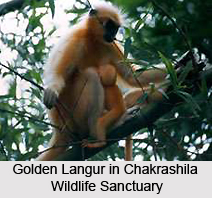 Kokrajhar is one of the twenty-three districts of Assam and can be described as the gateway to the northeastern region of India. Both road and rail touches this district at Srirampur before they go on to other districts in Assam and the other northeast states. The district has a total area of 3,169.22 sq. km. and a total population of 9,30,404 according to the Census-2001.
Kokrajhar is one of the twenty-three districts of Assam and can be described as the gateway to the northeastern region of India. Both road and rail touches this district at Srirampur before they go on to other districts in Assam and the other northeast states. The district has a total area of 3,169.22 sq. km. and a total population of 9,30,404 according to the Census-2001.
Kokrajhar district is located on the north bank of the river Brahmaputra that slices the state of Assam into two, identified as north and south banks. The district lies roughly between 89.46` E to 90.38` E longitudes and 26.19" N to 26.54" N latitudes. The district is bounded on the north by the Himalayan kingdom of Bhutan, by Dhubri district on the south, Bongaigaon district on the east and the Indian state of West Bengal on the west.
The district can be easily reached as both the mainline road and rail passes through this district. There are beautiful places to visit in the district, especially in the northern side, where the natural scenery is exquisite. There are also numerous natural picnicking spots. It has to be admitted that these places are yet to be developed as tourist spots. But there is a great deal of scope even now for those who are adventurous and willing to witness the glory of nature in all its rugged beauty.
The kingdom of Bhutan is intricately linked with the district of Kokrajhar in many vital aspects of life of the people living both in the Bhutan hills and the plains of Kokrajhar. There is hassle-free movement of the people across the international border for the purpose of business and tours. The Bhutanese town of Gelephu is a nice place to visit from Kokrajhar as it is just across the international boundary. There is a fine road leading from the Shyamthaibari point on the National Highway 31(C) to Gelephu. Further on, inside Bhutanese territory, there is the town of Sarbhang that also can be visited via Gelephu.
The colourful Bodo community comprises the majority in Kokrajhar district. It also has a sizeable Rajbongshi and Santhal population.
Kokrajhar is also the headquarter of the Bodoland Autonomous Council which was created in 1993.
Wildlife
Golden langur (Trachypithecus geei) was first sighted in Kokrajhar district in the year 1953 near Jam Duar of Raimona Forest Range ( Ripu Reserve Forest) by Mr. E.P. Gee, a naturalist. The word `langur` is derived from the Sanskrit word `langulin` meaning long tail.
The natural habitat of the Golden langur is between the river Sankosh and Manas along the marginal part of the foothills of eastern Himalayas. The extended habitat of this animal is the Chakrasila Wildlife Sanctuary near Kokrajhar.
The Golden langur is now endemic to the above habitat and is a critically endangered species. It is also included in the Schedule-I of the Wildlife Protection Act.



















